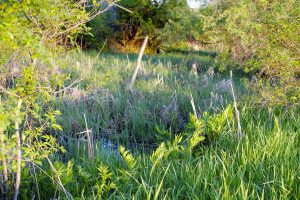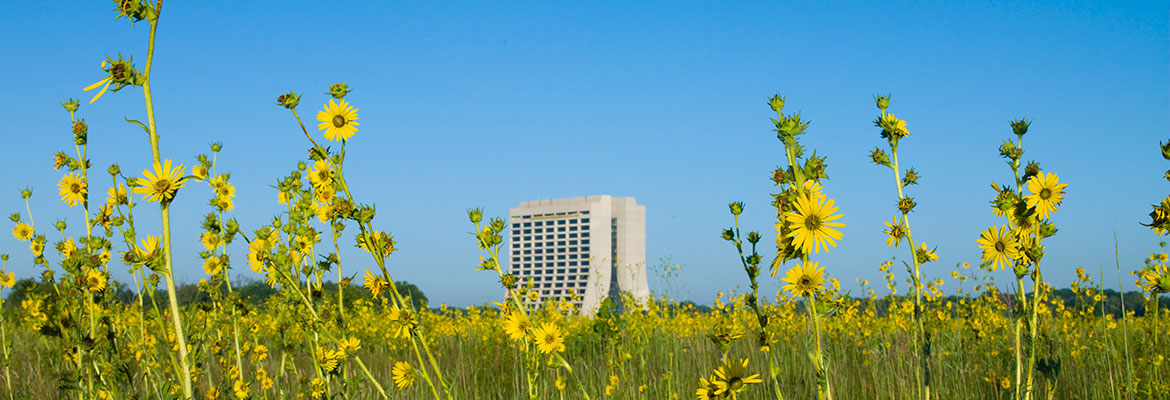
Rare wetland birds, snakes and invertebrates can be found in remnant sedge meadows. Here, sensitive fern (Onoclea sensibilis) grows among various sedges and grasses. Photo credit: T. Schramer
Sedge meadows are sedge-dominated wetland communities with wet prairie grass co-dominants on saturated soils. Sedge meadows are characterized by their dense groups of tussock-forming sedges, which often grade into shallowly flooded marsh edges. Typical species include a diversity of sedges (Carex spp.), blue-joint grass (Calamagrostis canadensis), spike rushes (Eleocharis spp.), great angelica (Angelica atropurpurea), sneezeweed (Helenium autumnale), and boneset (Eupatorium perfoliatum). Rare wetland birds, snakes and invertebrates (e.g., butterflies, dragonflies and damselflies) can be found in remnant sedge meadows. Sedge meadows typically fall under the regulation of the U.S. Army Corps of Engineers as jurisdictional wetlands. Giant reed grass (Phragmites australis), reed canary grass (Phalaris arundinacea), and purple loosestrife (Lythrum salicaria) are typical invasive species in sedge meadows. Frequent fire is prescribed to retain the open structure of a sedge meadow.
Fermilab has a restored sedge meadow in the Wetland Mitigation LMU and various degraded sedge meadows across the site.

